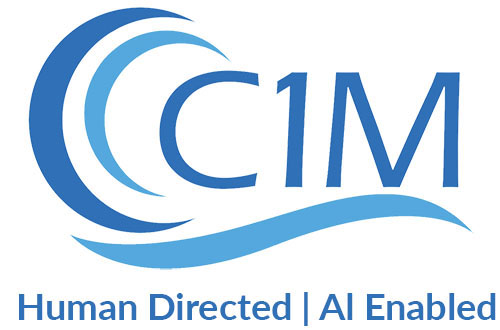
In today’s digital world, having an accessible website is more important than ever before. Not only does it allow for equal access to information and services for all users, but it is also a legal requirement under the Americans with Disabilities Act (ADA).
ContentFirst Marketing (C1M) helps clients ensure that their site is ADA compliant. You can easily tell that a website has been converted by the small logo in the lower left corner of the site.
However, the benefits of making your website ADA accessible go beyond the ability for all people to view and engage with your website. In fact, there is also an economic benefit in the form of an ADA tax credit.
In this blog, we’ll explore the benefits of having an ADA compliant website, and the importance of accessibility in the digital sphere. Also, you will learn how you can take advantage of the ADA tax credit by making your website accessible to everyone.
What is the ADA Tax Credit?
The ADA tax credit is a tax incentive the U.S. government offers to encourage business owners to invest in making their facilities, goods, and services accessible to individuals with disabilities. This credit is available to business owners that comply with the accessibility requirements outlined in the Americans with Disabilities Act (ADA).
The credit covers 50% of eligible access expenditures made during the previous tax year up to a maximum expenditure limit of $10,250. The credit is subtracted from the overall tax liability, meaning businesses can receive a credit of up to $5,000.
This tax credit is a great way for businesses to offset the costs of implementing accessibility measures and promote inclusivity for all users.
Which Businesses Qualify for the ADA Tax Credit?
Has ContentFirst Marketing already converted your website to meet ADA compliance standards? If so, then your business can apply for the tax credit. At C1M, our development team stays current with the accessibility requirements outlined in the Americans with Disabilities Act (ADA).
Many accessibility practices or types of implementations are included in the list of qualifying expenditures.
These include:
- homepage adjustments
- page structure and hierarchy
- live chat support that makes a site more accessible
- and messaging (copy and content)
Additionally, paid-for services such as file and media remediation can qualify as an expenditure.
There are many incentives, not the least of which is the tax credit for making your business website ADA accessible. To read the complete list of incentives, read the Tax Incentives for Improving Accessibility form provided by the ADA.
You should always consult with a tax professional or CPA to ensure that you meet the eligibility requirements before claiming the tax credit.
Additional information about the Tax Credits and Deductions is on the Americans with Disabilities Act website.
To make your website eligible for the ADA tax credit, C1M takes the following steps:
- Conduct an Accessibility Audit
- This will help you identify any accessibility barriers on your site and provide a roadmap for making the necessary fixes.
- Implement Accessibility Solutions
- This may include making changes to your website’s design, structure, and content to ensure it is accessible to all users.
ADA Compliance and Form 8826
Once we have completed the ADA compliance of your website, the steps to apply for the ADA tax credit using Form 8826 are as follows:
- Determine Eligibility
- The credit is available to businesses that generated $1,000,000 or less during the year prior to filing or businesses that employ 30 or fewer full-time employees.
- Record Your Accessibility Expenditures
- As stated above, throughout the year, you should keep track of all accessibility-related expenses such as accessibility tools, remediation services, and consulting fees. Make sure to keep detailed records of each expenditure.
- Consult with a Tax Professional
- Your tax professional or CPA can help you navigate the complex tax laws and regulations surrounding the ADA tax credit and provide guidance on any additional documentation that may be required to support your claim. By consulting with a tax professional, you can ensure you’re making the most of the ADA tax credit and promoting accessibility for all users.
- Fill out Form 8826
- The form is available on the IRS website and can be downloaded and printed. The form will ask you to provide information about your business, your accessibility expenditures, and the amount of credit you are claiming.
- Attach Form 8826 to Your Tax Return
- Make sure to double-check that all the information you have provided is accurate and complete.
Embracing ADA Compliance for a More Accessible Digital Future
Having an ADA compliant website is not only a legal requirement but also a smart business decision. By making your website accessible to all users, you can expand your user base, improve the user experience, and increase your website’s search engine rankings. Additionally, investing in web accessibility can help you avoid costly litigation and demonstrate your commitment to inclusivity and social responsibility.
It’s now easier than ever for businesses of all sizes to make their websites accessible while offsetting the costs with the ADA tax credit. So, whether you are a small business or a large corporation, making your website ADA compliant should be a top priority to ensure everyone has equal access to your products and services.
ContentFirst Marketing can help ensure your business’ website is eligible for the ADA tax credit and more.


